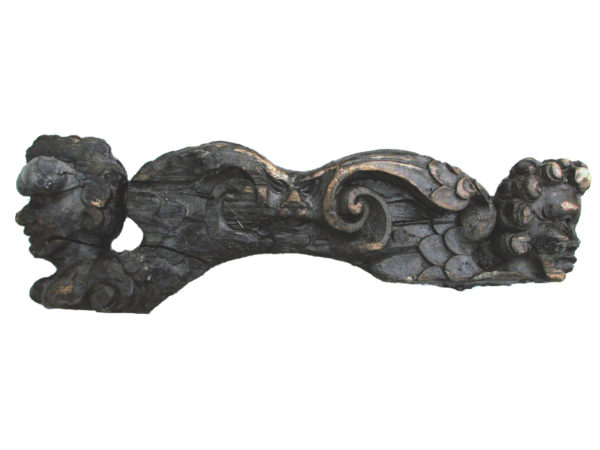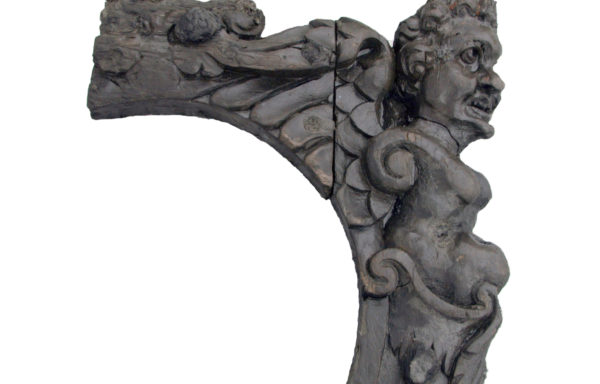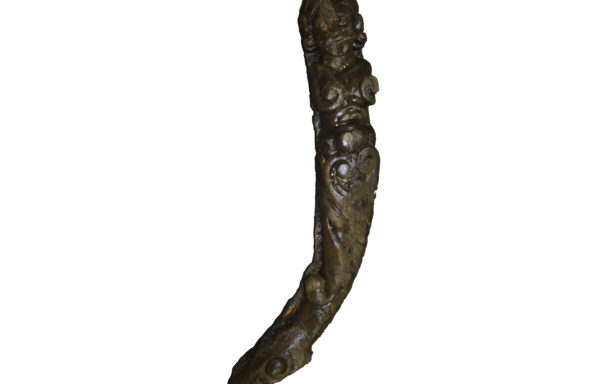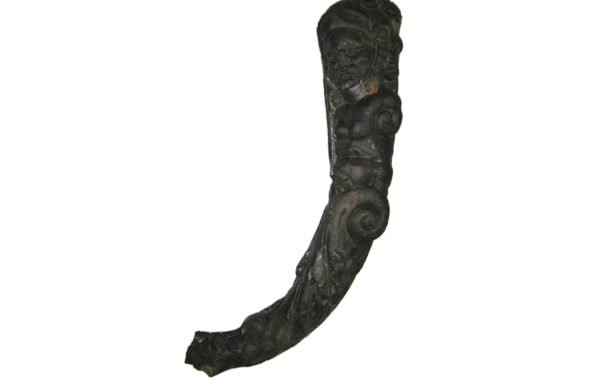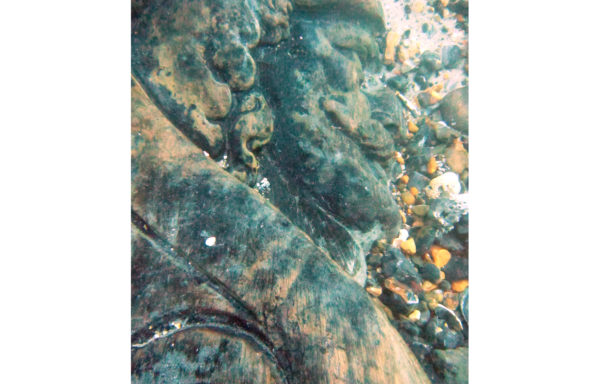Description
The other ‘cherubim’, certainly a back-to-back pair, has suffered more damage, not surviving below the shoulders. The style of the heads is different from the first ‘cherub’ as the result of different designs and/or different hands. The heads in this ‘pair’ also differ from each other, with one clearly being a helmeted warrior, of a type also paralleled on the Vasa. However, the grotesque animal mask between them has survived.
Interestingly, the carving of their wings is sharper and more skilful than the other pair, and more in line with the carving of the heads, suggesting they were assigned to a single carver to execute, perhaps a more experienced or advanced apprentice. We can therefore discern between these carvings at least two hands, possibly a third if the wings of the first ‘cherub’ were executed by a different carver from the rest of its body.
From the secular context in which they were found, and the classicising style in which they have been carved, they are unlikely to be ‘cherubim’ as such. TW concurs with this assessment (Pers. comm., Tanja Watson, Data Services Unit, English Heritage, 11.09.2013). They are more likely to be based on putti or amoretti, literally little ‘loves’ or cupids, widespread in the language of Western European art from the Renaissance onwards.
They appear hermaphrodite, the faces of both pairs apparently male, but the flanking scrolls at shoulder height appear to terminate in breasts at the front, with a protruding stomach suggesting bodily curves. It is noticeable that the faces of all four appear rather adult, as do the bodies of the two which survive to a greater extent, suggesting that these figures are inspired by, rather than being, putti as such. These figures are probably intended to be fantastical rather than conform to a type.
